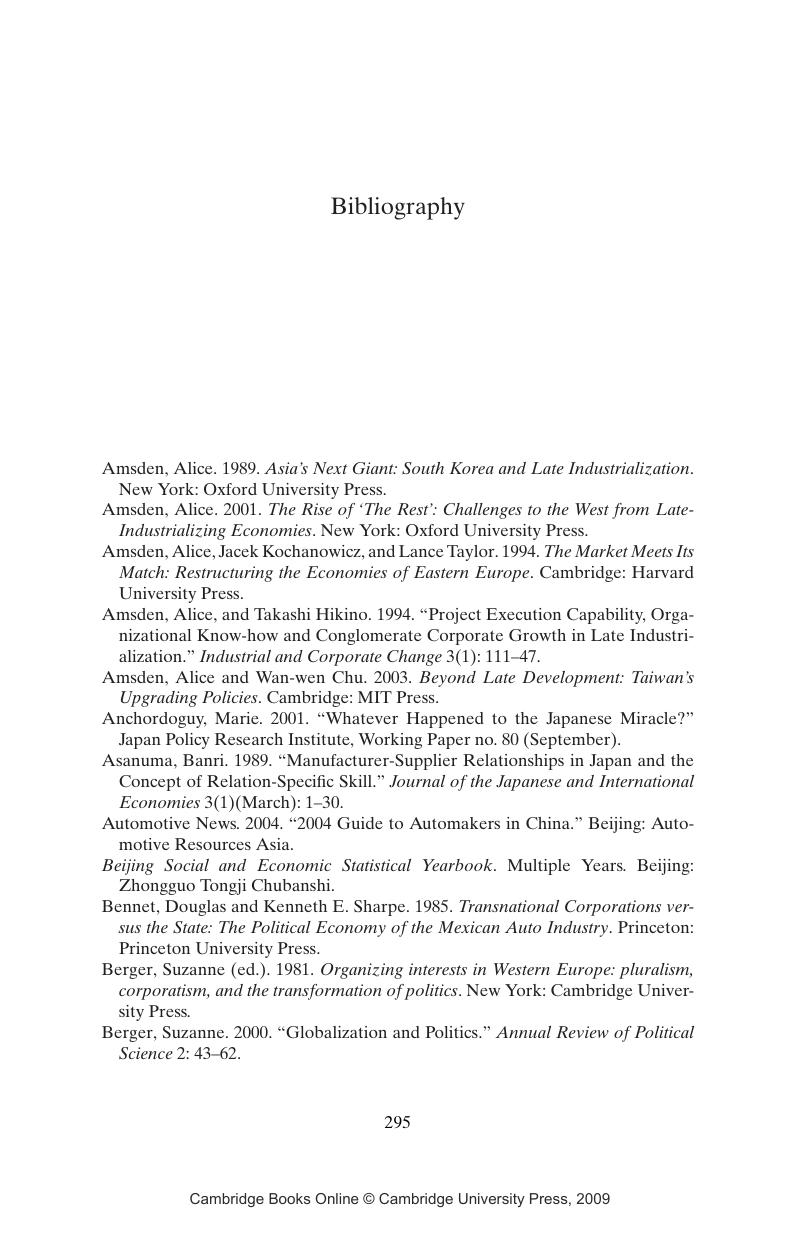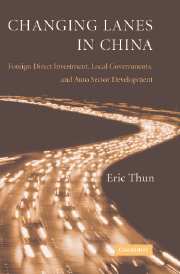Bibliography
Published online by Cambridge University Press: 12 November 2009
Summary

- Type
- Chapter
- Information
- Changing Lanes in ChinaForeign Direct Investment, Local Governments, and Auto Sector Development, pp. 295 - 312Publisher: Cambridge University PressPrint publication year: 2006



